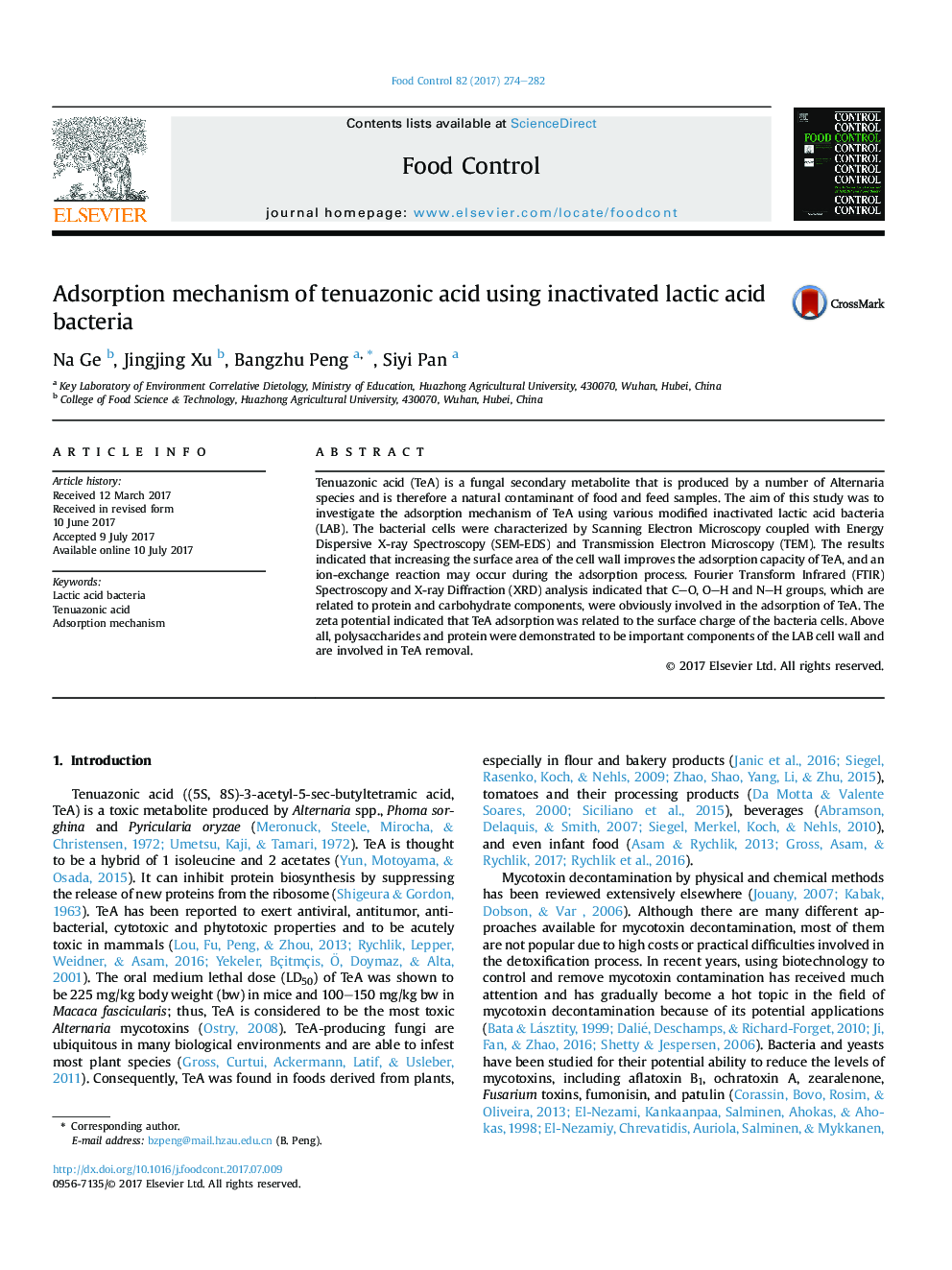| کد مقاله | کد نشریه | سال انتشار | مقاله انگلیسی | نسخه تمام متن |
|---|---|---|---|---|
| 5767160 | 1628382 | 2017 | 9 صفحه PDF | دانلود رایگان |
- Surface area of LAB cell wall will improve the adsorption capacity of TeA.
- An ion-exchange reaction may occur during TeA adsorption process.
- Polysaccharides and protein in LAB cell wall are involved in TeA removal.
- TeA adsorption is caused by cell wall and surface charge.
Tenuazonic acid (TeA) is a fungal secondary metabolite that is produced by a number of Alternaria species and is therefore a natural contaminant of food and feed samples. The aim of this study was to investigate the adsorption mechanism of TeA using various modified inactivated lactic acid bacteria (LAB). The bacterial cells were characterized by Scanning Electron Microscopy coupled with Energy Dispersive X-ray Spectroscopy (SEM-EDS) and Transmission Electron Microscopy (TEM). The results indicated that increasing the surface area of the cell wall improves the adsorption capacity of TeA, and an ion-exchange reaction may occur during the adsorption process. Fourier Transform Infrared (FTIR) Spectroscopy and X-ray Diffraction (XRD) analysis indicated that CO, OH and NH groups, which are related to protein and carbohydrate components, were obviously involved in the adsorption of TeA. The zeta potential indicated that TeA adsorption was related to the surface charge of the bacteria cells. Above all, polysaccharides and protein were demonstrated to be important components of the LAB cell wall and are involved in TeA removal.
Journal: Food Control - Volume 82, December 2017, Pages 274-282
